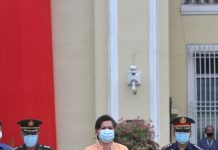To meet the growing consumer demand for live food fish, more international seafood buyers are turning to mariculture farms for a sustainable supply of popular marine species like grouper.
And this, industry analysts say, spells opportunity for Mindanao, which over the past decade has been developing the components for an integrated mariculture industry with the potential to significantly expand its exports, while helping to conserve food fish stocks in the wild.
This subject will be the focus of the 1st Mindanao Techno Forum on Mariculture, which will be held at the Chali Beach Resort in Cagayan de Oro from August 26 to 27, and is expected to draw fish farmers, investors, mariculture experts, economic development planners, and chamber of commerce representatives from across the region.
“It’s time to integrate Mindanao ’s mariculture sector,” said Dr. Hector San Juan, vice president for agriculture, mining and fishery of the Cagayan de Oro Chamber of Commerce and Industry Foundation, Inc.
“Already we have a strong aquaculture base here in Northern Mindanao which is looking to diversify into mariculture,” said San Juan . “And Western Mindanao has the multi-species hatchery in Tawi-Tawi, for a ready supply of fingerlings.”
The Oro Chamber is organizing the event in partnership with the Department of Agriculture’s Bureau of Fisheries and Aquatic Resources (BFAR), and USAID’s Growth with Equity in Mindanao (GEM) Program. [GEM]
San Juan said that visiting investors and buyers from Hong Kong , Taiwan and other Asian countries are generally impressed by Mindanao ’s comparative advantages in mariculture, including its typhoon-free climate and the number of sites highly suitable for fish farm development.
“What is crucial is the reliability of supply and volume,” he added. “This calls for Mindanao industry stakeholders to work towards greater integration.”
This would require the different industry components—which includes hatchery operators, fish growers, processors, exporters, and auxiliary service providers such as packing and shipping companies—to coordinate their efforts and ensure the smooth flow of inputs and outputs along the mariculture supply chain.
The Philippines does not have updated information on production from the mariculture and live capture of high-value species, but industry analysts estimate that the combined annual production of grouper and abalone is approximately 700 metric tons.
About 300 to 400 metric tons of these two species come from Mindanao , according to data gathered by the GEM Program, which is working with the private sector and BFAR to develop a sustainable mariculture supply chain for export in the region.
The technology forum will include plenary sessions on cultivating grouper, abalone and bangus; mariculture business models and best practices; investment opportunities; and the supply requirements of selected Singapore and Hong Kong buyers.
The forum is part of the lead-up to the 19th Mindanao Business Conference, which will run from September 17 to 18 in Cagayan de Oro City. [GEM]






